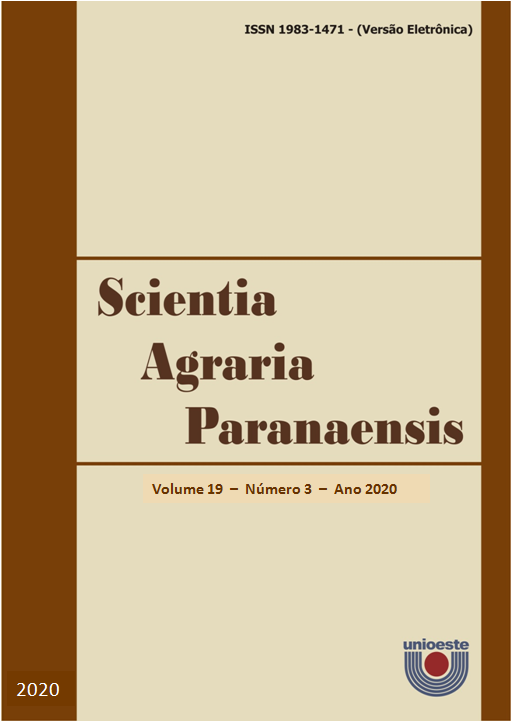Rock powder and organic fertilization in soil cultivated with black bean
DOI :
https://doi.org/10.18188/sap.v19i3.24537Résumé
The use of rock powder as a source of nutrients to plants can be an alternative or complement to mineral soluble and organic sources. Thus, the aim of this study was to evaluate the potential of different rock powder doses, associated or not with livestock manure, as a source of nutrients for bean and its effect on soil chemical attributes. The treatments consisted of the application of 0, 3, 6, 9 and 12 Mg ha-1 of rock powder, associated or not with livestock manure (17 Mg ha-1), applied on the soil surface, without incorporation. The experiment was carried out in completely randomized blocks, with three replicates, and in a factorial arrangement (5x2). The grain yield of bean, height plants and number of plants m-2 were not influenced by the treatments. On the other hand, the application of 3 Mg ha-1 of rock powder associated with livestock manure resulted in a higher number of grains per pod, and the increase in the rock powder doses affected the number of pods per plant. In the soil, only the manure application, regardless of the rock powder, resulted in effects: reduced potential acidity and potential cation exchange capacity, and increased phosphorus content and base saturation. Thus, rock powder, associated or not with livestock manure, is not effective in improving bean yield and soil chemical attributes after approximately three months of application, and the use of livestock manure, regardless of the rock powder doses, improves some chemical attributes in the soil.
Téléchargements
Publié-e
Comment citer
Numéro
Rubrique
Licence
Aviso de Direito Autoral Creative Commons
Política para Periódicos de Acesso Livre
Autores que publicam nesta revista concordam com os seguintes termos:
1. Autores mantém os direitos autorais e concedem à revista o direito de primeira publicação, com o trabalho simultaneamente licenciado sob a Licença Creative Commons Attribution que permite o compartilhamento do trabalho com reconhecimento da autoria e publicação inicial nesta revista.2. Autores têm autorização para assumir contratos adicionais separadamente, para distribuição não-exclusiva da versão do trabalho publicada nesta revista (ex.: publicar em repositório institucional ou como capítulo de livro), com reconhecimento de autoria e publicação inicial nesta revista.
3. Autores têm permissão e são estimulados a publicar e distribuir seu trabalho online (ex.: em repositórios institucionais ou na sua página pessoal) a qualquer ponto antes ou durante o processo editorial, já que isso pode gerar alterações produtivas, bem como aumentar o impacto e a citação do trabalho publicado (Veja O Efeito do Acesso Livre).
Licença Creative Commons
Esta obra está licenciada com uma Licença Creative Commons Atribuição-NãoComercial-CompartilhaIgual 4.0 Internacional, o que permite compartilhar, copiar, distribuir, exibir, reproduzir, a totalidade ou partes desde que não tenha objetivo comercial e sejam citados os autores e a fonte.


